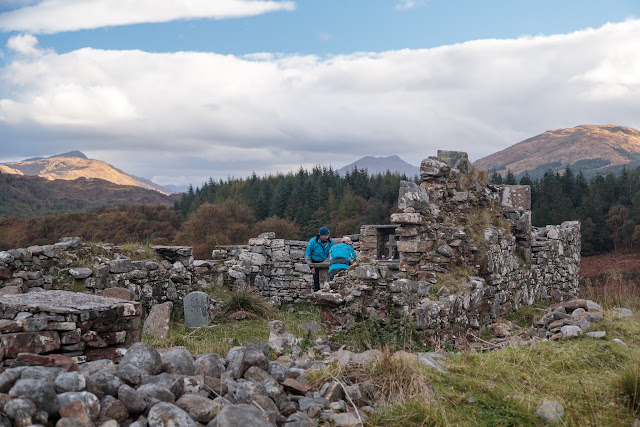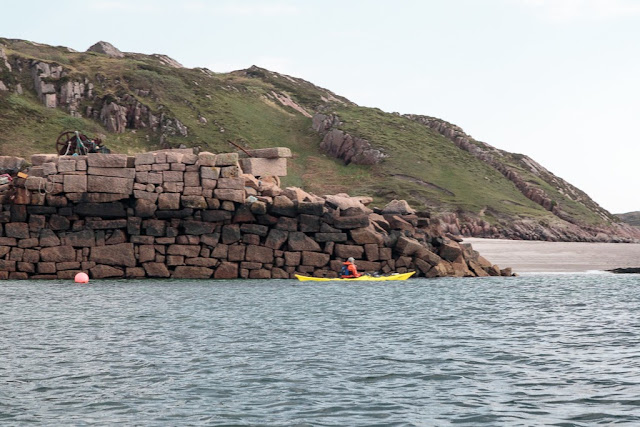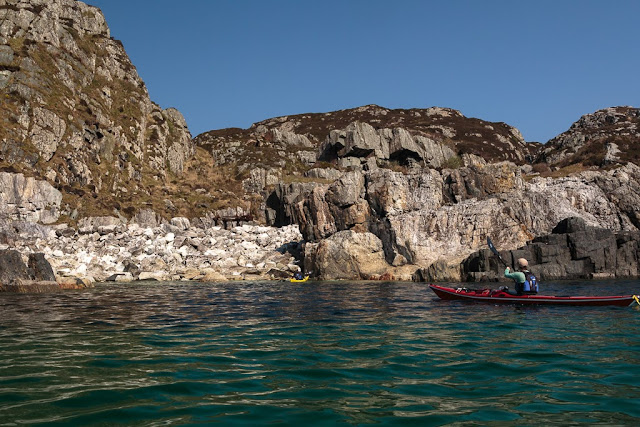We left the tents up till they were nearly dry and...
...loaded the boats all before...
...the rising sun's rays hit the beach.
Soon we were back on the loch and as we approached a...
...wooded narrowing, we turned a slight bend and there before us lay...
...St Finan's Isle which almost blocks the loch. It is a moraine island which formed as the glacier which cut Loch Shiel melted depositing its rubble. At one time it probably dammed back the waters of the loch raising the shoreline.
We landed at the old stone jetty where generations of locals have brought the remains of their dead...
...to be buried within its relatively soft soil.
Stones of various ages crowd the summit of the isle around the...
...ancient walls of St Finan's chapel. It was built in about 1500 by the chief of the Clanranald to replace an earlier wooden structure. It was abandoned in the late 1600's so was already a ruin by the time Bonnie Prince Charlie came this way in 1745, on his way to Glenfinnan at the head of the loch. Almost certainly the Prince would have stopped here and made his way up to the chapel. St Finan (the leper) was born in Ireland and is thought to have lived between about 520 and 600. Several places in Scotland and Ireland are named after him. He is not to be confused with the later St Finan (of Lindisfarne) who died in 661 after becoming Bishop of Lindisfarne.
At the east end of the chapel lies the altar backed by a recess, which contains a stone cross. On the altar is a remarkable object. It is a Celtic seamless cast bronze bell. Amazingly it has been here for over a thousand years. Nowadays it is chained up but it is amazing that it has survived the millennia without being plundered. Of course there is a dreadful curse attached to the bell and any one who stole it would regret doing so for every second of their few remaining days... During an internment, the bell is taken down to the jetty and rung at the head of the cortège as they slowly make their way up to the waiting grave.
The chapel offered a clear view down the lowland outer loch which contrasted...
...with the mountains that crowded the long inner loch.
All too soon it was time for us to leave the peaceful isle. We could just have paddled past but why race through life? It's those that rush, for whom the bell tolls...
For the full stereo vision experience read Ian's account here:

















































